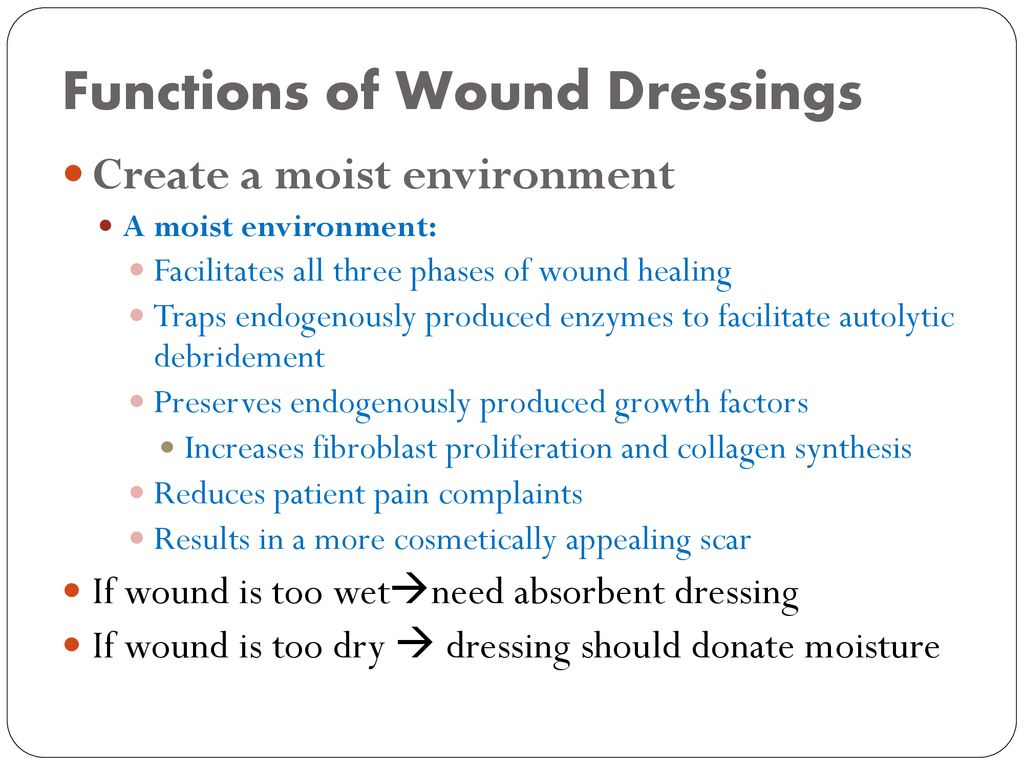These are readily available in most health care settings.
Wet to moist wound dressing.
Making a moist wound dressings.
Your health care provider has covered your wound with a wet to dry dressing.
Coyne researched the cost effectiveness of using a polyacrylate moist wound dressing in comparison with wet to dry.
Providers can consider using impregnated forms of gauze dressings to prevent evaporation of moisture.
Unravel the gauze place it onto the wound and cover with a dry dressing over the top.
He found a 26 percent savings annually in a 65 nationwide home care agency and remarked that wet to dry dressings increase pain slowed wound healing and increased infection rate.
Moisten a piece of gauze with saline and squeeze out the excess fluid so it is damp not dripping wet.
Wet dressings use two pairs of pajamas or sleepers.
Winter discovered that epithelisation the process of wound closure would proceed twice as fast in a moist environment than under a scab.
Winter s work began the evolution of modern wound dressings that promote moist wound healing.
They help to relieve itching heal the skin and help the creams or ointments to be more effective.
Specifically cell growth needs moisture and the main goal of moist wound therapy is to create and maintain these optimal moist conditions.
Keeping the wound area moist is very important in certain types of wound care.
Wet to moist dressing and wound irrigation and packing traditionally when wounds required debridement wet to dry dressings were used.
It is important to only use wet dressings with the topical creams or ointments as directed by your healthcare provider.
For wounds that need this particularly wounds that need to be debrided sometimes providers will use wet to dry dressings.
In order to maintain sufficient moist condition thus it is important to put on a wound dressing which is not going to dry out and get adhered to the wound bed.
I have listed the frequency per the centers for medicare and medicaid guidelines.
Wound drainage and dead tissue can be removed when you take off the old dressing.
The idea of moist wound healing was born in 1962 when george d.
The dressing is allowed to dry out and when it is removed it pulls off.
They should be cotton and without itchy seems or.
With this type of dressing a wet or moist gauze dressing is put on your wound and allowed to dry.
Wet dressings are safe.
4 6 advanced wound care.
To clean a dirty or infected wound.
This cannot be further from the truth.
This involved applying moist saline or other solution i e dakin s to gauze placing it into a wound bed allowing it to dry and then removing it.
This involves soaking gauze or cotton in saline and putting it on the wound.
Follow any instructions you are given on how to change the dressing.

